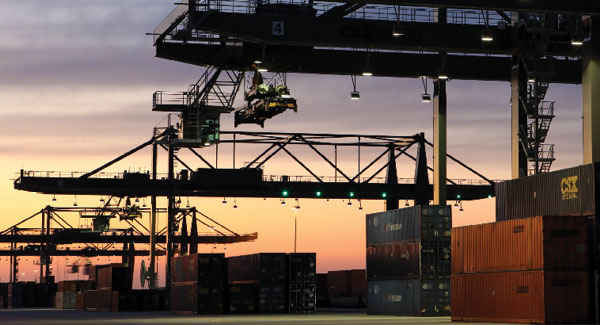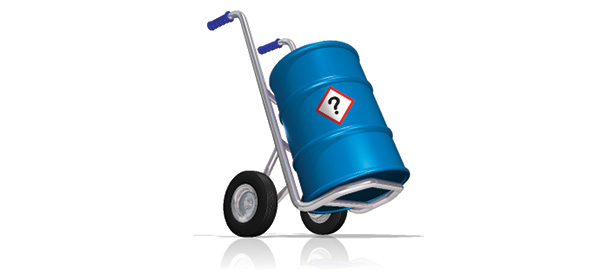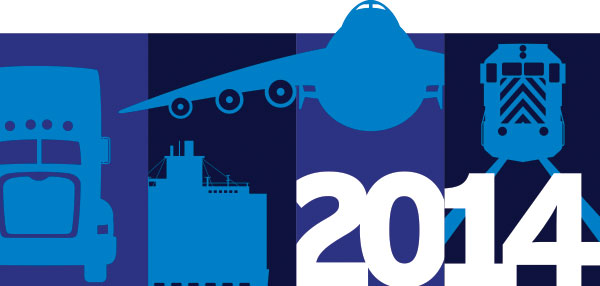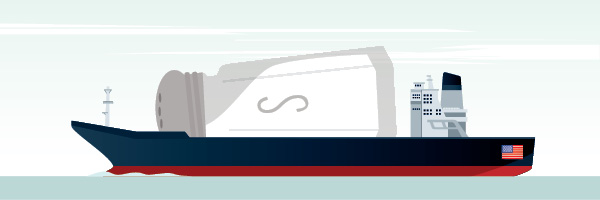Articles
Legislation, Public Policy, Regulations

Flexibility Key to Success in Liquor Logistics
The next time you settle down after a hard day with a glass of wine or a mixed drink to help you unwind, take a moment to understand how that alcoholic beverage came to fill your glass. A lot depends on which country you are drinking it in and the many tariffs designed to protect […]
Read More
How to Prepare for the Food Safety Modernization Act
When President Obama signed the U.S. Food and Drug Administration’s (FDA) Food Safety Modernization Act (FSMA) in January 2011, it marked the first time in more than 70 years that the U.S. government introduced any significant legislative change to the food industry. The motive was clear: Educate and instruct public and private sectors on how […]
Read More
Making Hazmat Regulation Compliance Less Hazardous
Hazardous material (hazmat) transport regulations can often seem like a foreign language. An abundance of unique terms leaves many shippers perplexed. Even the phrase "hazardous materials" can be confusing because the term "dangerous goods" is standard outside the United States. And with regulations constantly shifting and changing, it gets increasingly harder for shippers to remain […]
Read More
Intermodal: Too Much of a Good Thing?
The growing popularity of intermodal transportation leaves more shippers planning their way around equipment shortages and traffic jams.
Read More
Understanding Capacity Constraints
The trucking industry faces capacity constraints, but there are solutions available to help shippers minimize the impact.
Read More
From the Outside In: Supply Chain as Strategic Advantage
Even non-supply chain executives appreciate the value of flexible and agile operations.
Read More
Regulation as an Opportunity
Manufacturers are facing an increasing number of regulations in a variety of areas from increasing food safety to meeting specific ground-level ozone policies. The FDA Food Safety Modernization Act of 2010, signed into law in 2011, is just one example of recent legislation. Resulting from widespread cases of tainted eggs and peanut butter, the sweeping […]
Read More
Trends—September 2014
HCS Updates: Asked and Answered The Occupational Safety and Health Administration‘s (OSHA) 2012 Hazard Communication Standard (HCS) is sure to elicit a supply chain reaction from chemical manufacturers, distributors, and end users. The updates to HCS 1994, OSHA’s previous convention, feature some cosmetic changes—"material safety data sheets" are now referred to as "safety data sheets"— […]
Read More
A National Standard for Hiring ‘Safe’ Motor Carriers
Q: Is there confusion over what constitutes a safe carrier when screening and contracting for shipments? A: Most definitely. Unfortunately, the courts are deciding safety standards for carriers, and their opinions vary widely from state to state. This puts contractors—shippers, brokers, forwarders, and receivers—in an awkward position, particularly when something goes wrong, such as a […]
Read More
House Members Seek to Set Due Diligence Standards for Motor Carrier Hiring
On May 22, 2014, Representatives Duncan (R-Tenn.), Paulsen (R-Minn.), and Davis (R-Ill.) introduced legislation in the United States House of Representatives entitled “To enhance interstate commerce by creating a National Hiring Standard for Motor Carriers,” H.R. 4727 (the “Bill”). If the Bill were to be enacted into law, the states would be prohibited from imposing […]
Read More
Are You Ready to ACE It?
On Feb. 19, 2014, President Obama signed an Executive Order intended to streamline the export/import process. It establishes December 2016 as the completion date for the International Trade Data System (ITDS), which will allow businesses to transmit, through an electronic "single-window," all the data required to import or export goods. The Automated Commercial Environment (ACE) […]
Read More
Trends—July 2014
The 25th Annual State of Logistics Report: Ready For a New Route After a rollercoaster year for the economy and the transportation sector, the Council of Supply Chain Management Professionals and Penske Logistics released their 25th annual State of Logistics report. Aptly titled Ready For a New Route, the report focuses on 2013’s weak economy, […]
Read More
10 Steps to Import Compliance
Ever-changing import rules enforced by U.S. Customs and Border Protection (CBP) require companies to remain current on regulations and process methodologies—or risk delays and noncompliance fines. Organizations that fail to comply with current customs rules—even in ignorance—can be designated as high risk, and subject to more frequent inspections and longer processing times in the future. […]
Read More
Could New Fuel Efficiency Standards Lead to Transportation Cost Savings?
In February 2014, the Obama administration outlined plans for improving fuel efficiency and reducing greenhouse gas emissions for American trucks. To support this effort, the Environmental Protection Agency and U.S. Department of Transportation must set new standards for medium- and heavy-duty vehicles. The rules, which the agencies must issue by March 2016, will have ripple […]
Read More
Why Every Manufacturer Needs a Reverse Logistics Solution
The average manufacturer spends nine to 14 percent of total sales on product returns each year, according to an Aberdeen Group study. Yet an estimated 45 percent of manufacturers do not have a reverse logistics solution. They rely on retail or wholesale partners to deal with customer returns, recalls, and seasonal overstocks. Until the mid-1990s, […]
Read More
U.S.-Canada Trade: Getting a Line on Cross-Border Shipments
To efficiently move goods across the U.S.-Canada border, shippers and logistics providers must adapt to regulatory, geographic, and currency challenges.
Read More
What Midmarket Companies Need to Know About Trade Compliance
Q: What is the status of midmarket companies in the global trade arena? A: Global trade has become increasingly attractive to the midmarket—defined as companies with revenues between $5 million and $1 billion—because of lower sourcing and production costs in some developing countries, as well as rising consumption in some overseas markets. Between 2012 and […]
Read More
Preparing for New Trade Regulations
Major trade regulation changes are affecting the global supply chain, unprecedented in both number and magnitude. Although the changes impact some industries more than others, every company that imports into, or exports from, the United States or Canada will be affected. The majority of the regulations require new licensing, while others mandate significant software updates. […]
Read More
Efficient and Compliant Hazmat Shipping: Today You Can Have Both
Q: What are the common hazmat violations, and what are the consequences for shippers and carriers? A: In the United States, both the Department of Transportation (DOT) and the Federal Aviation Administration (FAA) regulate hazardous material (or dangerous goods) transportation. Penalties can range from a few thousand dollars to more than one million dollars, and […]
Read More
Trends—March 2014
Is the Jones Act Worth its Salt? A briny tale about a man named Jones, complete with international intrigue, American protectionism, twisted truths, and misplaced blame unfolded recently when a 40,000-ton shipment of road salt bound for New Jersey got waylaid in Searsport, Maine. The man in question is Wesley Jones, the U.S. senator from […]
Read More